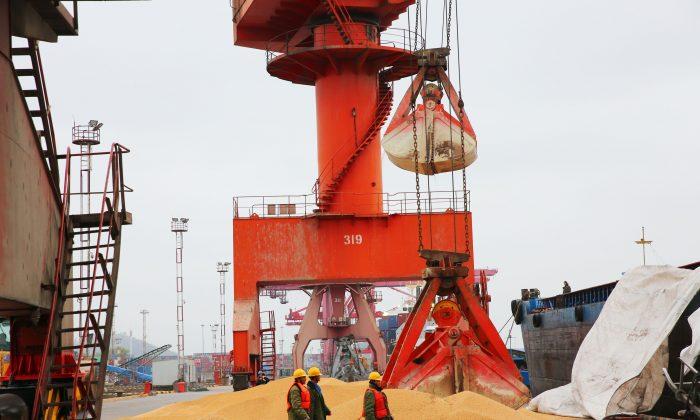News Analysis
China has sent its marine militia into the South China Sea to engage in a series of military provocations as the United States battles the CCP (Chinese Communist Party) virus, commonly known as the novel coronavirus.
The People’s Armed Forces Maritime Militia (PAFMM), referred to as “little blue men,” began in January to move vessels through the 34-mile-long Union Banks, a sunken atoll in the center of the South China Sea’s Spratly Islands chain, according to vessel-tracking and satellite imagery reviewed by Radio Free Asia (RFA).
Despite the United Nations recognition of claims by Malaysia, the Philippines, Vietnam, and Taiwan, China asserts that it holds exclusive rights to more than 80 percent of the South China Sea, encompassing an area 1.4 million square miles in the Pacific Ocean that holds up to 22 billion barrels of oil, and 290 trillion cubic feet of natural gas.
China has the world’s largest and farthest-ranging fishing operations, outstripping the next 10 biggest nations combined. China deploys 672,000 motorized vessels with 2,500 of those fishing in “far off waters,” according to Global Fishing Watch, a nonprofit group that tracks fishing activities. But thousands of full-time PAFMM sailors with military training that never fish are tucked within that fleet.
The PAFMM operates at least 84 purpose-built vessels with mast-mounted water cannons for spraying and reinforced steel hulls for ramming, according to Andrew Erickson, a professor of strategy in the U.S. Naval War College (NWC)’s China Maritime Studies Institute (CMSI).
The PAFMM boats that “fly the flag” are often shadowed by armed People’s Liberation Coast Guard and Navy formations. The 2017 U.S. National Security Strategy (NSS) stressed that China is engaged in continuous competition with America—neither fully “at peace” nor “at war.” The NSS identified each of the three Chinese sea forces as representing significant and growing risks to U.S. interests and values.
The USS Theodore Roosevelt Carrier Strike Group, accompanied by the 31st Marine Expeditionary Unit in support of U.S. allies, conducted a South China Sea “freedom of navigation” operation, including a historic first port call to Danang on March 4 to celebrate 25 years of diplomatic relations between the United States and Vietnam.
PFAMM vessels were spotted on March 14 at Johnson Reef, in the southwest corner of Union Banks. The timing corresponded with the anniversary of the 1988 Battle of Johnson Reef, in which dozens of Vietnamese troops died and China first seized control of the reef.
China seriously upped its provocations in February with its ground units firing lasers at U.S. surveillance aircraft in the region. The PLA Air Force also began conducting sorties in the East China Sea that included Shaanxi Y-8 planes conducting anti-submarine drills in the contested waters off the coast of Taiwan.
The United States retaliated March 23 with a Navy Lockheed EP-3E reconnaissance aircraft that conducted surveillance sorties between Taiwan and the Philippines.
The next day, the USS Barry, accompanied by the guided-missile cruiser USS Shiloh, conducted a live-fire missile launch from the Philippine Sea into the South China Sea. In the most unusual move, the U.S. 7th Fleet posted a video of the activation and launch of a medium-range Standard Missile-2 on its Facebook page.
Such Chinese belligerence would normally result in the USS Theodore Roosevelt Task Force—which had moved west into the Philippine Sea—to reverse course and re-establish U.S. authority in the South China Sea. But on March 24, the world’s most powerful Naval task force has been immobilized by an outbreak of the CCP virus.
U.S. Pacific Fleet Commander Adm. John Aquilino told The Associated Press (AP) that the Roosevelt would be moved to Guam, 2,000 miles from the South China Sea. He warned U.S. adversaries, “But let there be no doubt the ship is ready to respond if needed.”
But retired Adm. James Stavridis, a former ship commander who became NATO’s top commander in Europe, told AP: “The Navy is headed into choppy waters in terms of readiness in the months ahead.”
He warned that the ship’s tight sleeping quarters might become “birthing compartments” for the virus.





